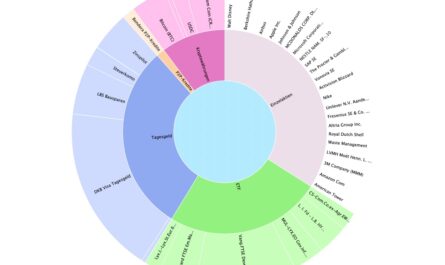Employees and groups of people who pay into the German pension scheme voluntarily should start making private provision early, not only because of the pension gap, but also because the German pension system is suffering from its most important pillar: its financing. Demographic change – caused by a declining number of younger people and a simultaneous increase in the number of older people – is upsetting the balance for financing the pay-as-you-go pension system. The intergenerational contract is in danger of failing. It is a structural problem for which the younger part of our society in particular should urgently find and, above all, seek a solution.
Fewer contributors finance more pensioners
According to the German Pension Insurance Fund, around 56.73 million insured persons financed almost 25.84 million pensioners by the end of 2019. This means that there were not quite 2.2 contributors for every pensioner. However, this is nicely calculated, because contribution payers are distinguished between an actively and a passively insured person. While actively insured persons provide for new payments within a reporting year, no new money comes into the system from passively insured persons. They have acquired the right to a pension payment in the past, but no longer pay contributions. This can happen, for example, if a person has become self-employed from a long-standing employment relationship and does not continue to take out voluntary statutory insurance. After all, with around 39.12 million people, the actively insured represent the considerably larger group.
This ratio of contributors to pensioners has steadily deteriorated in recent years. In 1955, every pension payment was matched by five contributors. Nevertheless, the number of pensioners and retirees has more or less balanced out in recent years. However, this will not remain the case. In the coming years, the descendants of the baby boomer generation will retire and thus switch from the most important source of income to the highest payout group within the DRV.

The population is getting older, fewer offspring are coming along
While a woman still gave birth to more than two children on average in the 1930s, the number declined steadily after the economic upswing during the 1950s and 1960s. More and more women and families decided against having children altogether. Most recently, the average number of children a woman has in her lifetime was about 1.4. To maintain the population and thus safeguard the pay-as-you-go system and the intergenerational contract, this figure would have to be at least 2.1.
In concrete terms, one could say that the past generation has neglected to provide for future contributors. But the situation is not much better even among the younger population group, which means that the problem will become even worse in the coming years. Our society is shrinking and aging at the same time. Already today, every second person in Germany is older than 45 and every fifth is older than 66.
Higher life expectancy is a burden on social security funds
Another major burden on our pension system is rising life expectancy. What is a nice thing for the individual and his or her fellow human beings is a problem for the pension system, since the payments for a single pensioner always have to be paid over a longer period of time. According to the Federal Statistical Office, the average life expectancy of newborn boys was recently 78.6 years and that of girls 83.4 years. 65-year-old men could expect an average of 17.9 more years of life in 2017/2019, and for women of the same age it was as much as 21.1 years.
In 1950, these figures were about five and seven years of life lower. Statistically, those born later live longer: by 2060, average life expectancy for men and women is expected to rise to 86.8 and 89.5 years respectively. The retirement age, on the other hand, has recently been rising much more slowly. Since 2011, this has risen gradually from 65 to 67. For the years up to 2031, an increase to 68 or even 69 years is being discussed.
This all has implications for pension and health insurance, but also for other care services for older people, which is underlined by a look at the old-age dependency ratio. This illustrates how many people of retirement age there are for every 100 people of working age over 20. According to estimates by the German Federal Statistical Office, there will be 47 people of retirement age for every 100 people of working age in 2030 – in 2020, the figure was 37, and in 1990, only 24.
Older people are already forced to work longer than they did ten years ago. In the last decade, the proportion of working people over 65 has doubled to 8 %.

Pension gap: Longer education periods, longer pension payments
The gap between contributors and pensioners is also widening because many people start working much later, but pension payments have to be made over a longer period of time. So less new money is coming into the system, while longer periods have to be bridged on the expenditure side.
Whereas it used to be common practice to enter working life directly after leaving school at the age of 18 or even 16, thus accumulating earning points and paying contributions at an early stage, the duration of training is now much longer with university studies and the like. The average age at which graduates start their careers in Germany is just under 27, so with a second degree, the 30-year mark is quickly broken.
All of this time is ultimately needed to finance pensions.
Keyfacts:
- Demographic change endangers the pension system
- fewer and fewer contributors finance one pensioner
- baby boomers are retiring
- Fewer children prevent young people from paying
- pensions have to be paid for longer due to increased life expectancy
- longer education leads to fewer years of contributions





